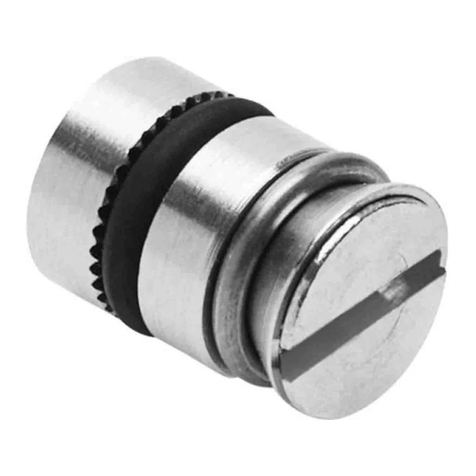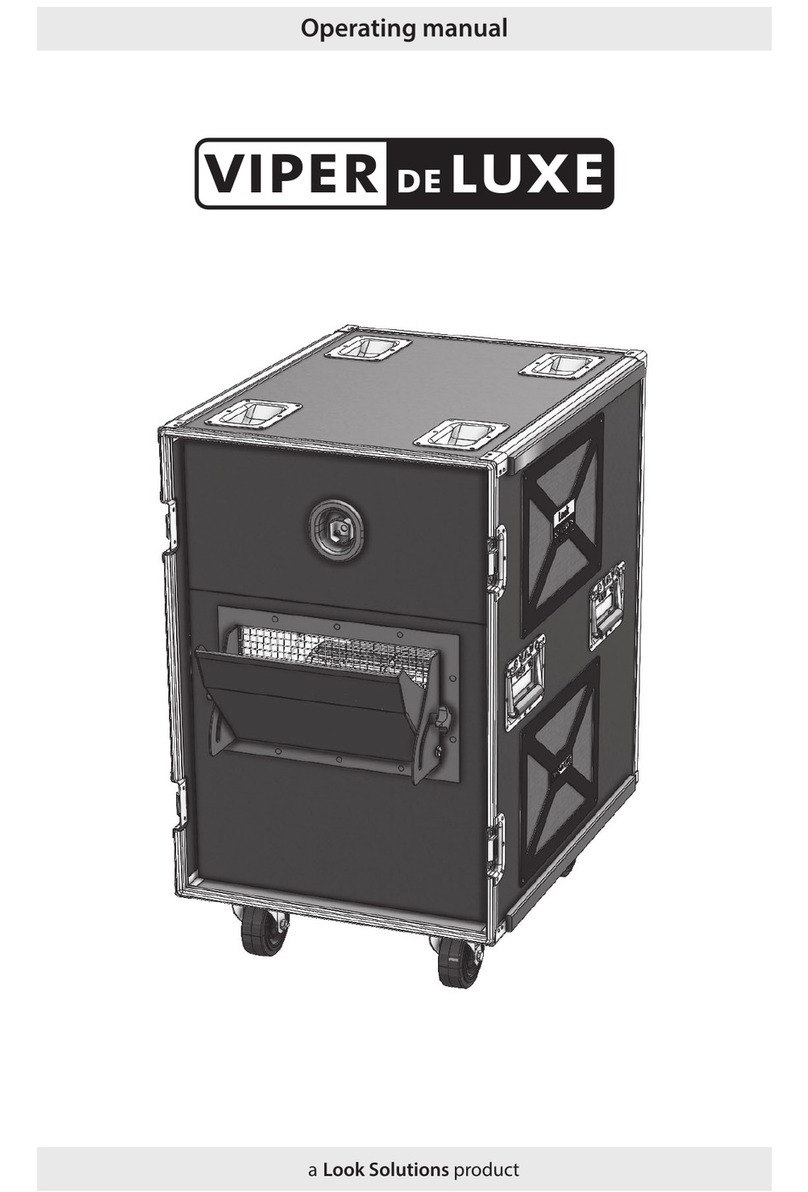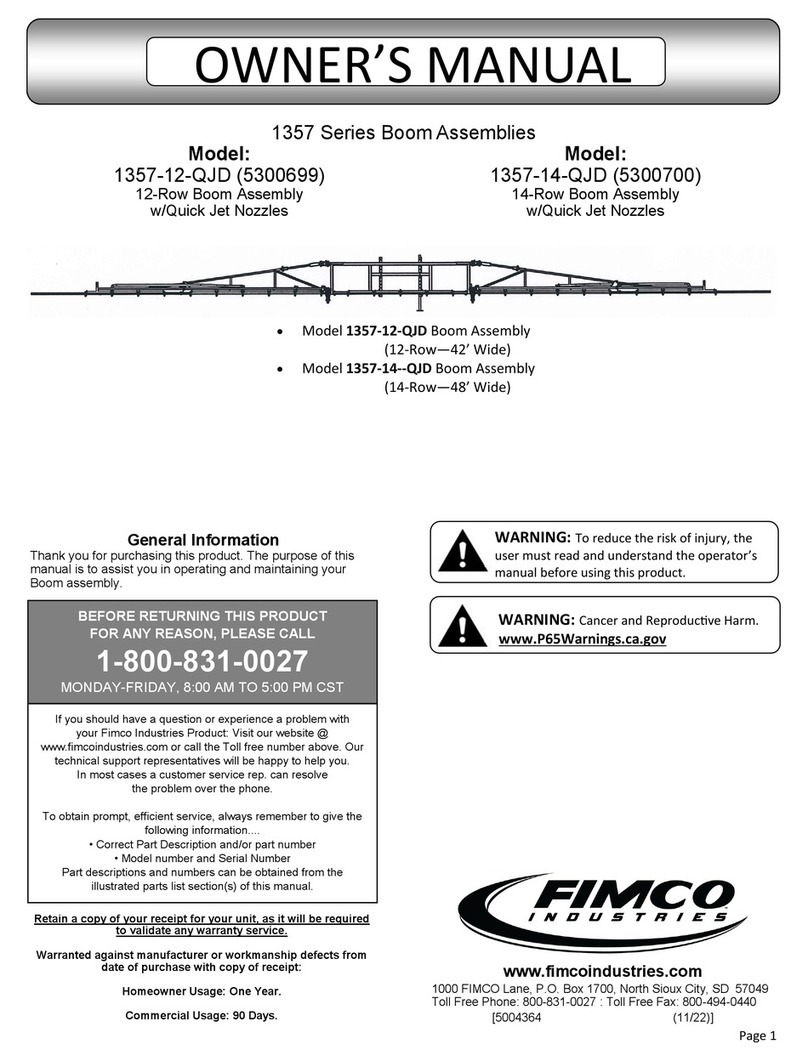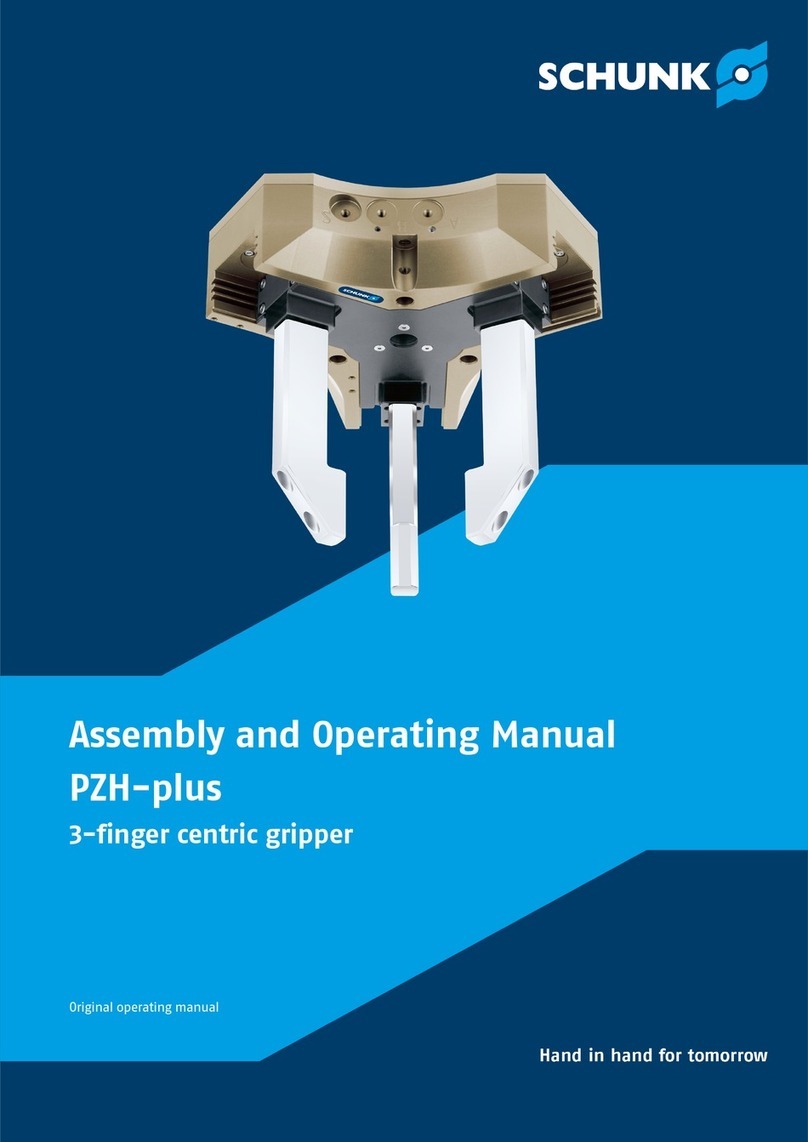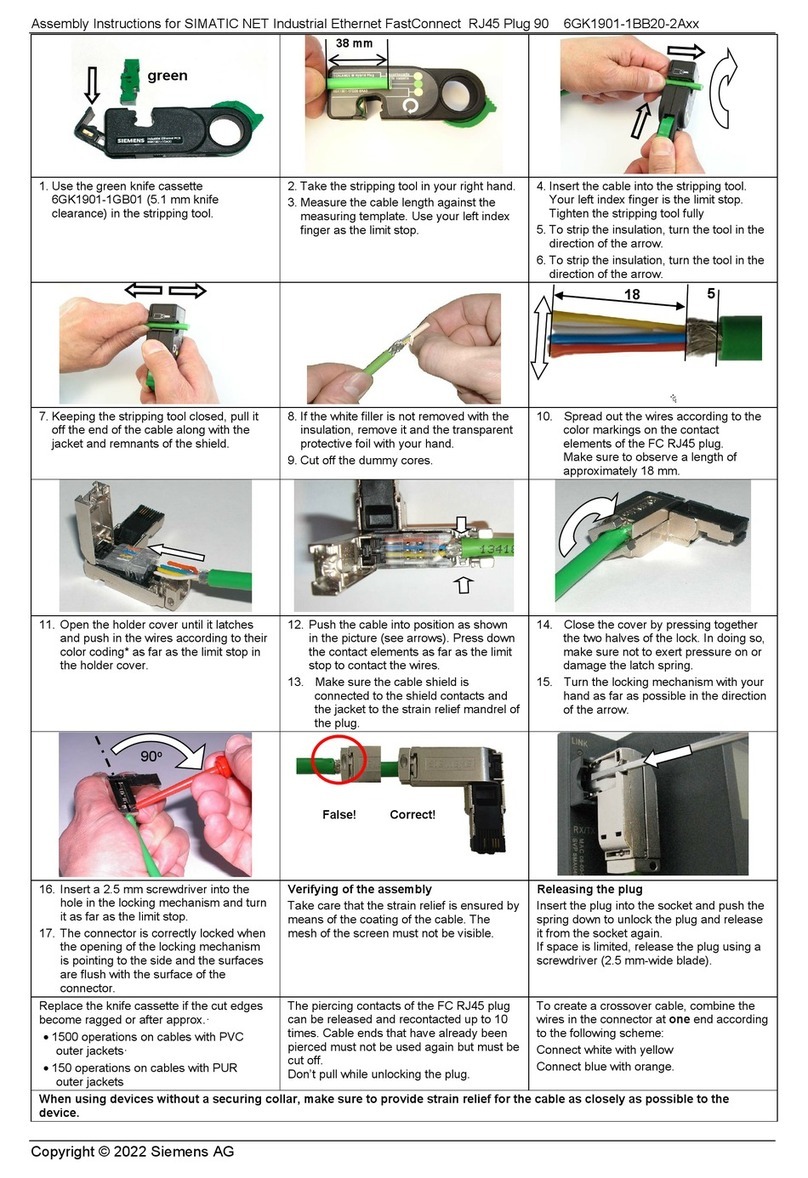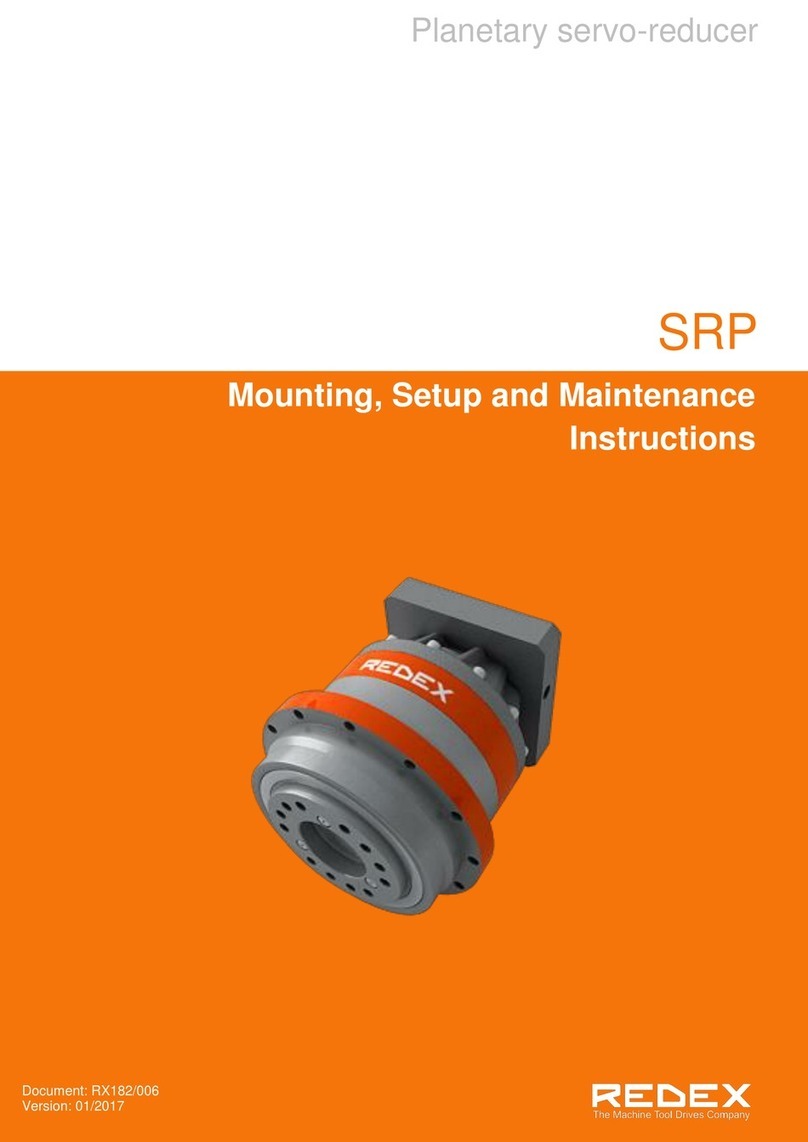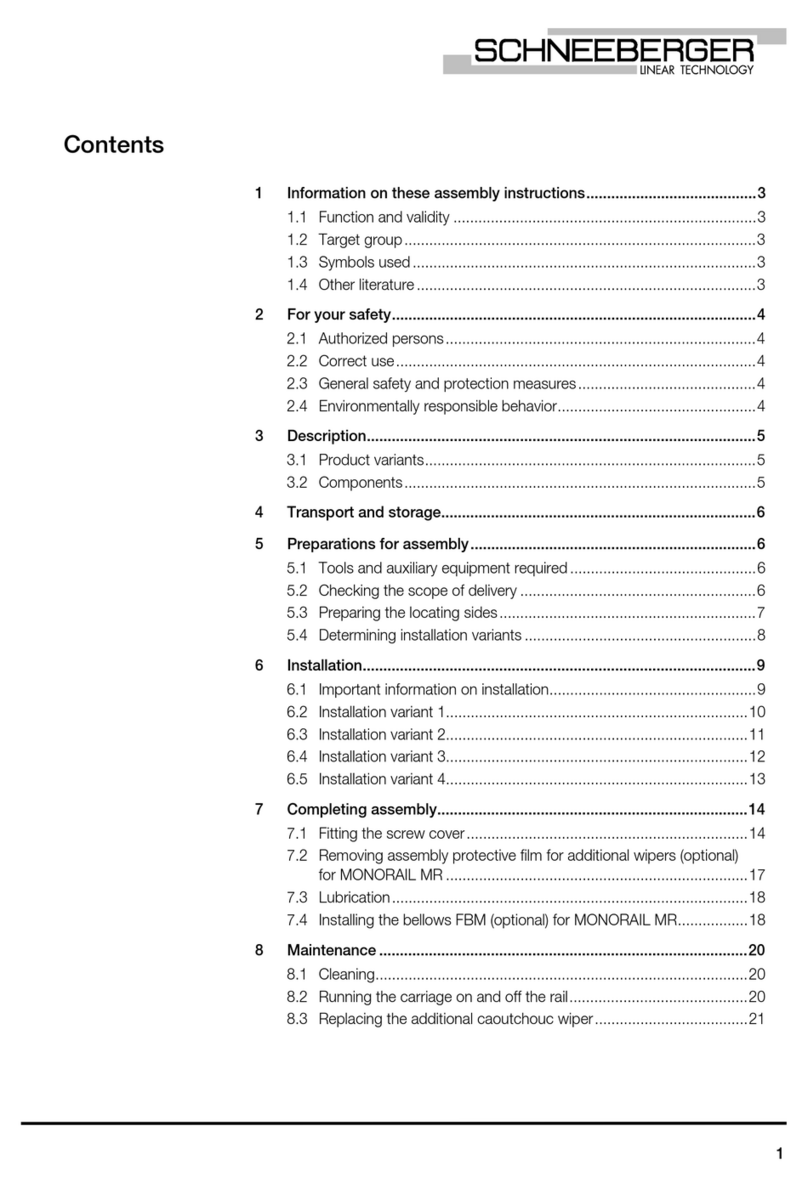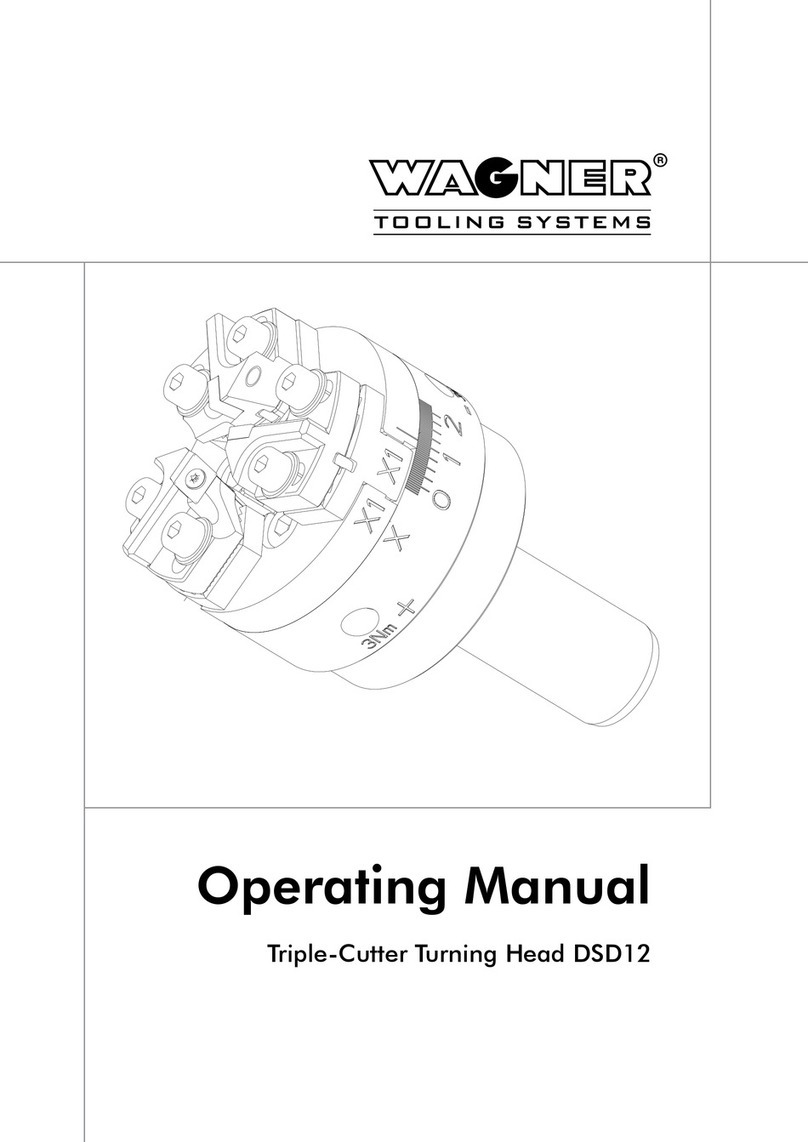GC Water NEX Formulation Tank User manual

info@gcwater.com
20 Opportunity Road, Camdenton, MO 65020
805-484-1589 • www.GCWater.com
NEX Formulation Tank
User Guide

This documenT and informaTion disclosed herein is proprieTary To Gc WaTer and, may neiTher be reproduced or copied in Whole or in parT or
disclosed To oThers, nor employed for desiGn, procuremenT, or manufacTurinG purposes WiThouT specific WriTTen permis sion from Gc WaTer.
Contents.....................................................................................................................2
Unit Information......................................................................................................3
Formulation System Diagram.........................................................................4
Installation Hardware ...........................................................................................5
Installation Notes...................................................................................................6
POU Connection Layouts.................................................................................7
Installation Instructions......................................................................................8
Start Up Instructions ...........................................................................................9
Change The TDS Controller Set Points .................................................10
Calibrating TDS Controller.............................................................................10
Hand Held TDS Meter ......................................................................................11
Emergency Bypass............................................................................................12
Formula Installation & Replacement ........................................................13
Routine System Check Guide......................................................................14
Troubleshooting Guide ....................................................................................15
Gauge Info ..............................................................................................................16
Warranty ..................................................................................................................17
CONTENTS
PAGE 2

Water Requirements
Must be fed by a NEX water processing unit.
Incoming Water Line Size . . . . . . . . . . . . . . . . . . . . . . . . . . . . . . . . . . . . . . . . . . . . . . . . . . . . . . . . 3/8”
Outgoing Water Line Size . . . . . . . . . . . . . . . . . . . . . . . . . . . . . . . . . . . . . . . . . . . . . . . . . . . . . . . . 1/2”
Pressure Min/Max . . . . . . . . . . . . . . . . . . . . . . . . . . . . . . . . . . . . . . . . . . . . . . . . . . . . . . . 50 to 90 PSI
Temperature. . . . . . . . . . . . . . . . . . . . . . . . . . . . . . . . . . . . . . . . . . . . . . . . . . . . . . . . . . . . . . 50-80°F
Power Requirements
Electrical . . . . . . . . . . . . . . . . . . . . . . . . . . . . . . . . . . . . . . . . . . . . . . . . 115 Volts AC, 60 Hertz, 1 Phase
Amp Draw . . . . . . . . . . . . . . . . . . . . . . . . . . . . . . . . . . . . . . . . . . . . . . . . . . . . . . . . . . . . . . . 4 Amps
NOTE: Combine with water processing unit amp draw to get total draw.
Operating Parameters
Open Flow Rate. . . . . . . . . . . . . . . . . . . . . . . . . . . . . . . . . . . . . . . . . . . . . . . . . . . . . . . . . . . . 4.5 GPM
Service Flow Rate . . . . . . . . . . . . . . . . . . . . . . . . . . . . . . . . . . . . . . . . . . . . . . . . . . . . . . . . . . . 3 GPM
Tank Capacity . . . . . . . . . . . . . . . . . . . . . . . . . . . . . . . . . . . . . . . . . . . . . . . . . . . . . . . 20 or 40 Gallons
Output Pressure . . . . . . . . . . . . . . . . . . . . . . . . . . . . . . . . . . . . . . . . . . . . . . . . . . . . . . . . . . . . 50 PSI
Sound Emission . . . . . . . . . . . . . . . . . . . . . . . . . . . . . . . . . . . . . . . . . . . . . . . . . . . . . . . . . <50dB max
Unit Dimensions
Height (with wheels) . . . . . . . . . . . . . . . . . . . . . . . . . . . . . . . . . . . . . . . . . . . . . . . . . . . 20 gallon - 26.5”
. . . . . . . . . . . . . . . . . . . . . . . . . . . . . . . . . . . . . . . . . . . . . . . . . . . . . . . . . . . . . . . . . 40 Gallon - 29”
Width . . . . . . . . . . . . . . . . . . . . . . . . . . . . . . . . . . . . . . . . . . . . . . . . . . . . . . . . . . . . . . 20 gallon - 21”
. . . . . . . . . . . . . . . . . . . . . . . . . . . . . . . . . . . . . . . . . . . . . . . . . . . . . . . . . . . . . . . . . 40 Gallon - 24”
Depth . . . . . . . . . . . . . . . . . . . . . . . . . . . . . . . . . . . . . . . . . . . . . . . . . . . . . . . . . . . . 20 gallon - 19.5”
. . . . . . . . . . . . . . . . . . . . . . . . . . . . . . . . . . . . . . . . . . . . . . . . . . . . . . . . . . . . . . . . . 40 Gallon - 26”
Ship Weight . . . . . . . . . . . . . . . . . . . . . . . . . . . . . . . . . . . . . . . . . . . . . . . . . . . . . . . 20 gallon - 55 lbs
. . . . . . . . . . . . . . . . . . . . . . . . . . . . . . . . . . . . . . . . . . . . . . . . . . . . . . . . . . . . . . . .40 Gallon - 63 lbs
Wet weight . . . . . . . . . . . . . . . . . . . . . . . . . . . . . . . . . . . . . . . . . . . . . . . . . . . . . . . 20 gallon - 222 lbs
. . . . . . . . . . . . . . . . . . . . . . . . . . . . . . . . . . . . . . . . . . . . . . . . . . . . . . . . . . . . . . .40 Gallon - 397 lbs
Warning
Do not use where water is microbiologically unsafe or of unknown quality. Replacement components are to be manufactured
or approved by GC Water to maintain eciencies. System is to be serviced at prescribed time/usage intervals according to this
document, to maintain warranty.
UNIT INFORMATION
PAGE 3

1
276
3
5
8
9
12
10
1313
FORMULATION SYSTEM DIAGRAM
4
1 - Formulation Unit Bypass
2 - Peristaltic Pump - A Formula
3 - Delivery Pump Switch
4 - Formulation Switch
5 - Processing Unit Switch
6 - TDS Controller
7 - System Pressure Gauge
8 - Peristaltic Pump - B Formula
9 - Formulation Out Fitting
10 - RO In Fitting
11 - Unit Connection Plug
12 - Power Supply Plug
13 - Panel Screws
11
PAGE 4

2 - 1/2” Trunk x 3/8” Branch Tees3 - 3/8” Equal Tees 1 - 1/2” x 3/8” Elbow
1 - Hand Held TDS Meter
1 - 1/2” Trunk x 1/2” Branch Tee 1 - 3/8” Tube x 1/4” FPT Tank Valve
1 - 1/2” Equal Tee
1 - 1/2” Tube x 3/8” Stem Enlarger
30’ of 1/2” Tubing 6’ of Power Cord
INSTALLATION HARDWARE
PAGE 5

Placement
Environment is to be clean, dry, and indoors. Unit is to remain above oor (rack and 4 wheel casters are provided). The system
is designed to t under a counter as a corner unit or next to an existing under counter item. The system should be located
in a climate controlled environment where it is protected from extreme hot or cold temperatures. The system must be easily
accessed for monitoring and service. Service area must permit access to all of the lter housings for removal and replacement
of elements or cartridges.
Installation Notes
1. RO unit can be mounted up to 7’ away. Additional distances are available.
2. Lines to POU: espresso machines, coee brewers, water tower, and ice machine lines are owner plumbed. Lines to Points
Of Use (POU) are to be Owner-Plumbed. Never include toilets, sinks, or dipper well.
3. Owner supplied shut o ball valves at city feed. Pipe and valve size must match site requirements.
4. Owner to provide GFCI electrical outlet.
5. The drain line must be attached and installed according to local city code. Usually with an air gap that has an unobstructed
vertical distance through free atmosphere between the lowest opening from any pipe, plumbing xture, appliance or other
piece of equipment conveying waste to the ood level rim of the receptor. The vertical distance between the conveyor and
receptor shall be no less than 1 inch.
6. Installation must comply with existing local plumbing codes. Air gaps must comply with drawings or an approved air gap
device may be used. In addition some local plumbing codes require back ow devices. Both the air gap device and back
ow device are not supplied as part of the unit. These devices are available through your standard plumbing supply house.
7. RO equipment must not be plumbed to dipper well, toilets or wash sinks. They a re to be on city water only.
8. City feed should be as direct as possible to prevent any pressure drops.
Installation Precautions
• The system must be installed with the inlets/outlets/drain as shown. Do not to reverse connections.
• Do not install on hot water line.
• Maximum temperature allowed is 80°F (38°C).
• A pressure regulator is required on incoming water pressure over 90 psi.
• Use Teon tape for connections. Do not use wicking or sealer for tting connections.
• Do not use torch or other high temperature sources near lter, cartridges, or any plastic ttings and pipes.
• Installation must comply with existing local plumbing codes.
• Do not install in direct sunlight.
• Protect from freezing. Do not install in area that will drop to 32°F (0°C) or below.
• Allow minimum service clearance space as shown in layouts to facilitate routine maintenance.
• Mount system in a position and location so as to prevent system from being struck by items.
Lines to Points Of Use (POU) are to be owner plumbed. Never include toilets, sinks, or dipper well. Never hook RO up to hot water.
INSTALLATION NOTES
PAGE 6

P.O.U. #1 P.O.U. #2 P.O.U. #3
Outlet From
Water Storage
Tank
P.O.U. #1 P.O.U. #2 P.O.U. #3
Outlet From
Water Storage
Tank
1/2” Tubing 1/2” Tubing1/2” Tubing
3/8” Tubing
3/8” Tubing
3/8” Tubing
3/8” Tubing
3/8” Tubing
3/8” Tubing
POU CONNECTION LAYOUTS
Product to POU (Brewers, Espresso, WaterTowers, etc...
City Feed
Drain
Below are two layouts showing suggestive POU connections for our units. We suggest a 1/2” trunk line and 3/8” branch line
to the POU.
‡Disclaimer: This drawing is theoretical and may not apply to actual situations. It is intended to help installers visualize typical plumbing line runs from the “water
equipment” to the store Coee/Tea Brewers, Espresso Machines, and Water Tower.
Product to POU (Brewers, Espresso,
and Water Tower)
City Feed
Drain
LEGEND
Product to POU (Brewers, Espresso, Water Towers, etc...
City Feed
Drain
Hand
Sink
GC Water
Water
Unit
Water
Tower
Brewers
Espresso
Machine
Product to POU (Brewers, Espresso, WaterTowers, etc...
City Feed
Drain
Hand
Sink
GC Water
Water
Unit
Water
Tower
Brewers
Espresso
Machine
Product to POU (Brewers, Espresso, WaterTowers, etc...
City Feed
Drain
PAGE 7

After the installation of the processor unit is nished you can then proceed with the formulation tank unit.
1. Open the shipping box.
2. Remove packing and discard. Remove the loose items.
3. Remove the system from the shipping container. Unit is heavy and requires 2 people to lift it out of the box.
4. Place the formulation tank unit into the desired location.
5. Run 3/8” tubing from the RO Out on the processing unit to RO In (10 in “Formulation System Diagram” on page 4) on the
formulation unit.
6. Run the “Unit Connection Cord” from RO unit to the formulation unit (11 in “Formulation System Diagram” on page 4)
7. Plug in the power cord (“Installation Hardware” on page 5) to the formulation tank panel (12 in “Formulation System Diagram”
on page 4). Do not plug the unit into the wall outlet at this time.
8. Install the A Formula to the left side of the unit when facing the front. The location will be marked with a large A and have green
tubing fed to it. Install the tubing (3 in “Formula Installation & Replacement” on page 16) into the tting by fully inserting the
tubing about 1/2” into the tting.
9. Install the B Formula to the right side of the unit when facing the front. The location will be marked with a large B and have blue
tubing fed to it. Install the tubing (3 in “Formula Installation & Replacement” on page 16) into the tting by fully inserting the
tubing about 1/2” into the tting.
10. To connect the pressure tank to the formulation tank, reference the diagram below. The pressure tank does not need to be next
to the formulation tank, it can be placed anywhere before the rst point of use.
11. Locate the tubing on the water out to your points of use.
12. Cut the tubing where you would like the tank to be and insert the 1/2’ equal tee ( #2 ).
13. Place the tank in a safe location.
14. Teon the top stem on the pressure tank and thread on the angled stop valve ( #4 ). Place the enlarger ( #3 ) into the angeled stop
valve ( #4 ).
15. Run the tubing from the 1/2” equal tee ( #2 ) to the enlarger ( #3 ).
16. Make sure that the angled stop valve ( #4 ) is in the on position. When it is on the blue valve handle should run parallel to the tubing.
NOTE: If the angled stop valve is left in the o position and the pump is turned on it will over pressurize the pump and cause damage
to the pump.
17. Distribute out to your points of use from the Form Out (9 in “Formulation System Diagram” on page 4) tting. The diagram on
“POU Connection Layouts” on page 7 will show a typical point of use setup with the provided ttings from the “Installation
Hardware” on page 5.
Installation is now complete. Follow the start up instructions on the following pages to complete the installation.
INSTALLATION INSTRUCTIONS
12
5
4
1 -
1/2” Equal Tee
2 -
1/2” Trunk x 1/2” Branch Tees
3 -
1/2” Tube x 3/8” Stem Enlarger
4 -
3/8” Tube x 1/4” FPT Tank Valve
5 - Pressure Tank
3
PAGE 8

Follow each step to complete the start up:
1. First, verify all the plumbing connections are correct.
2. Verify that the “Delivery Pump” switch (5 in “Formulation System Diagram” on page 4) and the “Formulation” switch (6
in “Formulation System Diagram” on page 4) are in the o position.
3. Verify the lters are fully seated and locked into the housings.
4. Verify that the bypass on the RO unit (Location located in the processing unit diagram) and the formulation unit (1 in
“Formulation System Diagram” on page 4) are turned o.
5. Turn on the city water that is feeding the unit. Check for any leaks around or within the unit.
6. Plug the system into a outlet.
7. Check the incoming water pressure and make sure it is within 50 - 90 psi. If it is below you will need a booster pump to bring
the psi within the acceptable range. If it is above you will need a pressure regulator to bring the psi within the acceptable range.
8. Turn on the “Processing System” switch (7 in “Formulation System Diagram” on page 44). The water processing unit
should turn on and the outgoing pressure gauge should start to read pressure. It should read within 10 psi of the incoming
pressure gauge.
9. Let the tank on the unit completely ll. It will take about 30-45 minutes to ll the tank completely.
10. Double check the A & B Formula box connections.
11. Turn on the “Delivery Pump” switch (5 in “Formulation System Diagram” on page 4). Pump should pressurize and the
system gauge should read around 60 psi.
12. Do not turn on formulation switch until tank is full. When tank is full turn on the “Formulation” switch (6 in “Formulation System
Diagram” on page 4). The TDS controller should turn on and the 2 peristaltic pumps should begin to spin.
13. Verify TDS controller set points to verify they are within your parameters. (“Change The TDS Controller Set Points” on page
10)
14. Wait 5-10 minutes allowing the system TDS level to equalize. TDS levels are equalized when your TDS controller (4 in
“Formulation System Diagram” on page 4) is reading your desired TDS range.
15. Start Up is complete.
START UP INSTRUCTIONS
PAGE 9

The TDS set point set at 140 for shut o. You can change the shut o point to the lever of TDS you desire.
1. To change the TDS controller set point start by opening the door on the TDS controller.
2. CP1 is your low range set point. To change it push the CAL button ( 1 ) once.
3. Verify the monitor displays CP1. The factory setting will display as 140 TDS.
4. Push the up or down button ( 2 ) on the TDS controller to adjust the TDS low range to your desired level.
5. CP2 is your high range set point. To change it push the CAL button ( 1 ) again.
6. Verify the monitor displays CP2. The factory setting will display as 155 TDS. Typically it is set 15 above low range.
7. Push the up or down button ( 2 ) on the TDS controller to adjust the TDS low range to your desired level.
8. To get out of verifying/programming mode, you need to push the CAL button ( 1 ) until the monitor displays current water
temperature and current TDS level in tank.
9. Close the cover to the small black box to protect the buttons from harm.
NOTE:
TDS controller must be calibrated every 3 months to maintain proper calibration level.
1. Use the supplied hand held TDS meter. Make sure the TDS meter is set to test a 0.7 factor (442). Follow the “Hand Held TDS
Meter” on page 11 for instructions on how to use and adjust the supplied hand held TDS meter.
2. Check the outgoing TDS levels from the unit in question.
3. If the TDS levels do not coincide, proceed to step 4.
4. Flip open the door on the front of the TDS meter.
5. Press and hold the CAL button ( 1 ) until a beep is heard and the display read CAL.
6. Press UP or DOWN ( 2 ) to achieve the desired reading.
7. Once the display matches the desired level, press the CAL button (1) again to set it.
8. Close the cover to the small black box to protect the buttons from harm.
MODE CAL
SET˚C/ ˚F ALARM
ON/OFF
2
1
CHANGE THE TDS CONTROLLER SET POINTS
CALIBRATING TDS CONTROLLER
PAGE 10

Taking Measurements
1. Remove the cap. (Do not use the cap for testing.)
2. Click the POWER button. The reading will always be zero in the air.
3. Make sure the TDS meter is set to test a 0.7 factor (442). It should say 0.7 in the top right of the screen. If not switch
the modes by following the directions in “Switching Modes”.
4. Dip the meter’s sensor into the water, liquid or solution to be tested.
5. Lightly swirl the meter to ensure the removal of air bubbles or electric charges.
6. The meter will display a reading instantly. Keep the meter in the water until the reading stabilizes (up to 5 seconds,
depending on the situation).
7. To view the reading out of the liquid, click the HOLD button. This will freeze the reading on the screen. Clicking HOLD
again will release it.
8. Click the POWER button to turn the meter o.
9. Shake any excess water o the meter and rinse with low TDS water (such as distilled, RO or DI), or use compressed
air to clean it. Put the cap back on.
Switching Modes
1. With the meter on, press and hold the MODE button.
2. The scales will cycle through on the display screen.
3. Release the MODE button when the desired scale is shown.
Temperature And Switching Temperature Modes
1. The temperature reading is always displayed on the LCD panel (except in calibration mode), and is shown simultane-
ously with EC/TDS readings.
2. The default mode for temperature is Celsius. To change the temp mode, quickly click the TEMP/CAL button to switch
from Celsius to Fahrenheit or vice-versa.
Care & Maintenance
1. If using the COM-80 for nutrients or high TDS solutions. ALWAYS RINSE THE SENSOR AFTER EACH USE. Rinse in
distilled or RO water, but tap water can also be used. Improper care will negatively aect readings and void the war-
ranty.
2. Your meter has been factory calibrated, which is sucient for most applications. The COM-80 will retain its calibration
for a long period of time, but recalibration may be necessary based on frequency of use, care and application of use.
3. Ideally, store the sensor dry (it should never be stored in water or a solution).
Changing the Batteries
1. When the meter displays a ashing battery symbol, your batteries are getting weak and should be replaced soon. To
change the batteries:
2. Pull out the blue battery compartment using your thumb nail.
3. Remove the three batteries.
4. Insert new batteries in the direction as depicted inside the compartment. The at side of the battery is the positive(+)
side. The meter uses LR44 batteries.
5. Close the battery compartment. Make sure it is tightly closed.
Calibration
Calibrating a scientic instrument is similar to tuning a musical instrument. Your COM-80 has been factory calibrated to
1413 µS (700 ppm), which is suitable for most applications, and is ready for immediate use. The meter will retain its cali-
bration for many years, depending upon care, frequency of use and application of use. If you need to recalibrate:
1. Obtain a certied EC/TDS calibration solution. Always calibrate close to the level you will be testing (or in the middle
of a range) .
2. Turn the meter on and insert into the solution. (Make sure the meter’s mode matches the composition of the solution).
If your meter shows the correct reading, stop here. If not, press and hold the CAL button for 5 seconds. The display
will ash and the temperature reading will change to a ashing ‘CAL’ image.
3. Adjust the reading to match the solution value with the UP or DOWN buttons (indicated by the arrows). When the
number matches the solution, click ENTER.
4. ‘CAL’ will ash briey, indicating progress. Allow a few seconds, do not press any buttons, and if possible, do not move
the meter.
5. When the meter is calibrated, ‘End’ will ash and the measurement will reappear.
6.
Temperature Calibration
If you need to calibrate the COM-80’s thermometer, only calibrate it in the air to a dierent, correct thermometer.
1. With the meter on and in the ll:, press and hold the POWER and TEMP buttons at the same time for 5 seconds.
2. ‘CAL’ and the temperature will ash on the screen.
3. Using the UP or DOWN buttons (arrows), adjust to the correct temperature.
4. Once you have corrected the temperature, click ENTER. ‘C -- CA -- CAL’ will ash on the screen and then ‘End’ will
briey appear. The thermometer is now calibrated.
HAND HELD TDS METER
PAGE 11

EMERGENCY BYPASS
NOTE:
There are 2 bypasses per system, one on the formulation unit and one on the water processing unit. Both units must be put
into bypass to prevent ooding and damage to equipment. Always put formulation unit into bypass rst to prevent ooding.
Putting the system into bypass
1. Turn OFF all the switches on the water storage unit.
2. Turn the yellow handle located on the front panel of the water storage unit towards “ON”. (1 in “Formulation System Diagram”
on page 4)
3. Turn the yellow handle located on the water processing unit towards “ON”. Location will be in the unit guide that came with
the water processing unit.
Note: Tank will not rell while in bypass. System pressure will read zero psi.
Removing the system from bypass
1. Turn the yellow handle located on the water processing unit towards “OFF”. Location will be in the unit guide that came with
the water processing unit.
2. Turn the yellow handle located on the front panel of the water storage unit towards “OFF”. (1 in “Formulation System Diagram”
on page 4)
3. Turn ON all the switches on the water storage unit.
Bypass ONBypass OFF
PAGE 12

FORMULA INSTALLATION & REPLACEMENT
Part#DescriPtion Qty FreQuency
38-1020 Formula, Complete Set, 1 Gallon 1 When Necessary
12
Removal
1. Place the formulation switch into the o position.
2. Verify that the peristaltic pumps ( 2 & 8 in “Formulation System Diagram” on page 4) are shut o.
3. To remove the tubing from the jugs tting, push the collet ( 1 ) down ush with the tting.
4. While the collet is depressed, pull the tubing ( 2 ) out of the tting.
Installation
1. Replace the depleted formula jugs with the new ones.
2. Install the tubing ( 3 ) back into the tting by fully inserting the tubing about 1/2” into the tting.
3. Place the formula switch into the on position.
3
PAGE 13

Routine system check should be done on a daily and weekly basis to verify the system is functioning correctly. By checking the
system you can prevent a major problem from happening and increase the life span of the unit and its components..
Check on a daily basis
• Verify that all the gauges are reading the correct psi.
• Check to make sure that all of the switches are in there correct location.
• Make sure that the system bypass handles are in the o position. Please contact your service provider when bypass handle
is moved into bypass. Only emergency situations require putting the bypass handle into the bypass position.
• Listen for any changes in the sounds coming from the unit.
• Check to make sure that there is formula. Make sure to re-order when the level gets down to the re-order line. Failure to
change the formula before it runs out can damage the peristaltic pumps.
Check on a weekly basis
• Verify that there are no leaks on or around the system.
• Make sure the TDS reading from the TDS controller are within the desired range.
• Check the outgoing TDS levels and make sure it matches up to the reading on the TDS controller.
ROUTINE SYSTEM CHECK GUIDE
PAGE 14

TROUBLESHOOTING OVERVIEW:
SYMPTOM
OR STATE
LIKELY
CAUSE
REMEDY
OR CORRECTION
Yellow lever on system is in
“Emergency By-Pass” position.
Consult previous shift log. Verify Service has been called.
Minor Leak around system. Filter seals need replacement. Call for service.
Major leak or ooding. 1. Turn circuit breaker o. 2. Place system in Emergency Hard Bypass, see below. 3.
Call for Service.
Less than 35 psi reading on the
“System Delivery” Gauge.
No electrical power or insucient City
Water Pressure to system.
Perform Steps 2 through 4.
Coee Urn short batching or
“System Delivery” Gauge reads less
than 35 psi.
Filters plugged and need replacement. Call for service (If above 35 psi, problem
may be with POU equipment).
System INLET Gauge reads 0 psi. Check water supplied to location Verify City Feed is open; still having
issues. Call for Plumber.
TDS levels do not stay at factory
levels
Too High TDS
Too Low TDS
Call for Service.
Out of Formula. Replace Formula by calling
GC Water 805.484.1589.
Step by step troubleshooting guide is designed for the store operator to avoid unnecessary service calls and expenses. Do
not hesitate to call for Technical Support if using this guide fails to x the problem. Please have the results of these step by step
checks ready before you call. Often the symptom or problem is not with the system itself, but with the power to the building or
city water pressure to the system. If no water is available to one POU (espresso or brewer) this is a sure sign the problem is not
with the system, but rather with the equipment the system supplies. Do not operate espresso machine or brew coee during
troubleshooting procedures, equipment damage may result. Y-STEP INSTRUCTIONS:
1. Check the system pressure gauge reading. If the pressure reading is normal, (35-60 psi), then there is no immediate problem
with the system. If the pressure moves below 35 psi or is at 0 psi, this means the city water pressure to system is too low
or the electric and/or water is turned o to system. See step 2.
2. Verify if power monitor is on. Check the system digital monitor to see if it is turned on. If not, push in the green button. If
the system now has electrical power, go to Step 3. If not, check to see if yellow switch is on; if not, or you had to plug in the
system, reset store electrical circuit breaker. Once power is returned, see step 3.
3. Check that water to the building is running by turning on a sink faucet. If water is running, check all water valves to the system
are turned on fully. If both steps show water is on and available to system, see step 4. If water to the system was not available
and is now restored to the system, wait 5 minutes for delivery pressure (above 35 psi) to be restored and for system pump
to begin running normally. See step 4.
4. If steps 1-3 fail to get the system producing water to the POU, call your Store Facility Service Center or GC Water immediately.
To supply water temporarily to the POU (points of use) (brewer, espresso, etc.,) bypass the system which will send city water
to the system instead of the system water. Turn the system into bypass by turning the yellow bypass handle on the front
faceplate from o to the bypass position.
NOTE: Tank will not rell while in bypass. System Pressure will read zero psi.
Do not place the system into “EMERGENCY BYPASS MODE” without informing the Store Management immediately.
TROUBLESHOOTING GUIDE
PAGE 15

GAUGE INFO
The pressure gauges will be able to show you what is going on with the system. This section will discuss the various uses and
meanings of the gauges. There is 3 gauges per system that are of importance to you.
Incoming Pressure gauge will show you the city water pressure that is feeding the water processing unit. This gauge can uctuate
depending on the city pressure. If it is below 50 then you will need a booster pump to increase the pressure to within the desired
level. If the line pressure is above 90 psi you will need a pressure reducer to bring the incoming psi to within the desired level.
Outgoing Pressure gauge will show you the water pressure that is coming out of the lters on the water processing unit. This
gauge should be relatively close to the incoming pressure gauge. It will typically sit about 5 psi less then the incoming pressure
gauge. If it is showing a dierence of 20 psi with the incoming pressure gauge your lters will need to be replaced right away.
The outgoing pressure gauge will have a resting psi of 0 psi when the storage tank is to maximum capacity. When the tank drops
below the pre set limit the outgoing pressure gauge will return to its normal operating pressure.
System Pressure gauge will show you the water pressure that is leaving your water storage tank out to your points of use. This
gauge should show a consistent psi. If it is cycling then you most likely have a leak at a point of use. If there is no psi reading
then you most likely have a pump issue.
PAGE 16

WARRANTY
1 Year Limited Warranty for Global Water Treatment Systems
Global Customized Water warranties it’s systems to be free from defects in material and workmanship as follows:
WHAT IS COVERED:
One (1) year from the date of purchase. Pump, motor & electrical controls, lter housings, membrane housings, brackets, storage
tanks, media tanks, tubing, ttings, gauges, valves are covered for one year provided suggested maintenance is performed.
LIMITS ON WARRANTY:
The design of the overall treatment system and the performance of these systems are related to the chemistry of the water be-
ing treated, this warranty is limited to systems installed on municipal water supplies and installed on supplies within parameters
specied on performance data sheets. Replacement of pre and post elements is part of the normal maintenance required by
your systems. These replacements are not covered and preventative maintenance must be performed in accordance with the
unit guide to maintain this warranty.
This warranty does not include damage to your system do to:
• Abuse, misuse or neglect
• Excessive inlet water pressure (over 90 psi)
• Excessive water temperature (over 80 degrees F)
• Freezing, alterations or misapplication
• Change in the inuent water characteristics
This equipment must be installed and operated in accordance with GC Water’s recommendations and applicable state and local
codes. The GC Water Limited Warranty extends to the original purchaser of the system. This warranty covers all parts and facto-
ry labor needed to repair any GC Water supplied item that proves to be defective in material, workmanship or factory preparation.
The above mentioned warranty applies for the rst full calendar year from date of purchase. Defective items are subject to the
following exclusions: membranes, lters, 0-rings, and all other parts or components that require regular replacement as a result
of ordinary usage herein classied as consumables.
DISCLAIMERS:
This warranty applies only if the system is installed and used in compliance with the instructions enclosed with the system. The
Warranty does not cover any non GC Water parts, the costs of repairs or adjustments to the unit that may be needed because of
the use of improper parts, equipment or materials, unauthorized alterations of the unit, or failure of a unit caused by such alter-
ations or by unauthorized repairs. The Warranty does not cover malfunctions of the unit due to tampering, misuse, alteration, lack
of regular maintenance, misapplication, fouling due to hydrogen sulde or iron, scaling from excessive hardness, or excessive
membrane hydrolysis due to chlorine levels in excess of 1.0 mg/L. In addition, damage to the unit due to re, accident, negligence,
act of God, or events beyond the control of GC Water are not covered by this warranty.
INCIDENTAL AND CONSEQUENTIAL DAMAGES:
GC Water does not assume responsibility for payment of incidental and consequential damages as a result of the failure of this
unit to comply with express or implied warranties, such as lost time, inconvenience, damage to personal property, loss of revenue,
commercial losses, postage, travel, telephone expenditures, or other losses of this nature. Some states do not allow the exclu-
sion or limitation of incidental or consequential damages, so this exclusion may not apply to you.
OWNER’S WARRANTY RESPONSIBILITIES:
Under the provisions of the Warranty, the owner is expected to schedule maintenance, as described in the Manual that accompa-
nies the system. Neglect, improper maintenance, abuse, or unapproved modications may invalidate the Warranty. Should your
unit develop a defect or otherwise fail to perform in accordance with this warranty, you should contact GC Water or the dealer
you purchased the product from.
IMPLIED WARRANTIES:
The implied at-law warranties of merchantability and tness for a particular purpose shall terminate on the date one year after the
date of purchase. Note: some states do not allow limitations on how long an implied warranty lasts, so the above limitations may
not apply to you.
OTHER RIGHTS:
This Warranty gives you specic legal rights and you may also have other rights which vary from state to state.
PAGE 17
Table of contents
Popular Industrial Equipment manuals by other brands
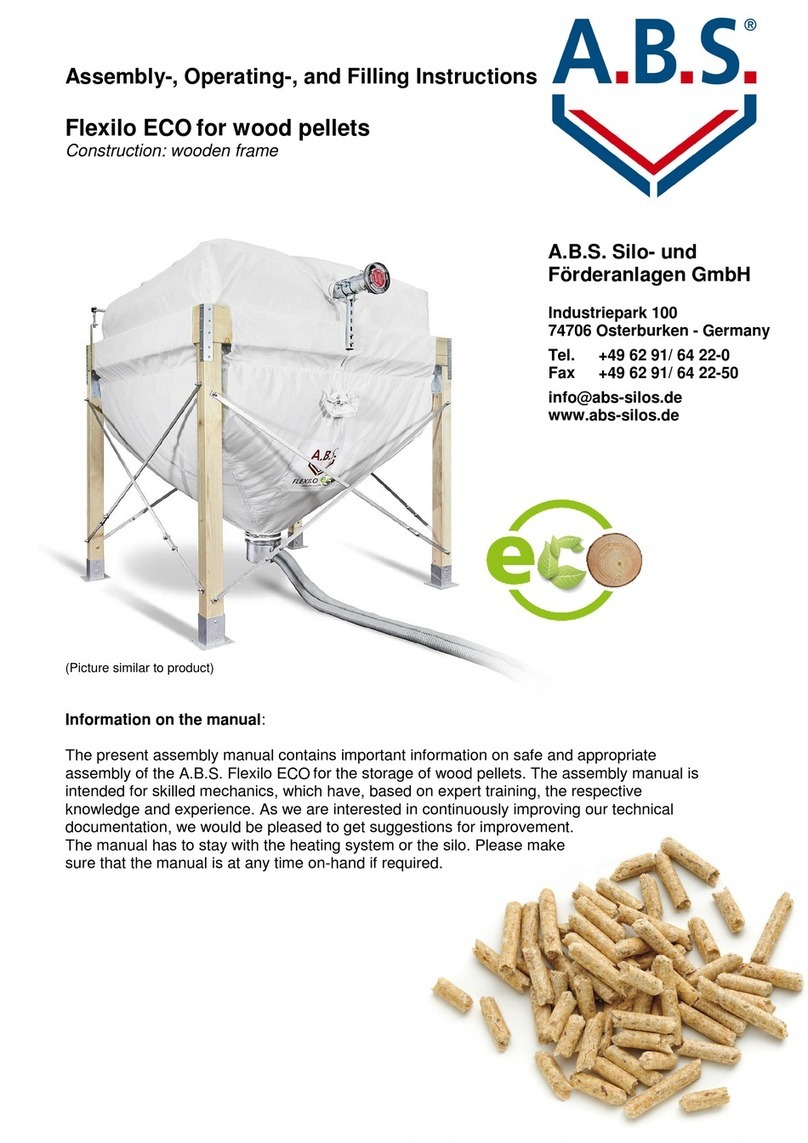
A.B.S.
A.B.S. Flexilo ECO Assembly-, Operating-, and Filling Instructions

Kitagawa
Kitagawa GT instruction manual
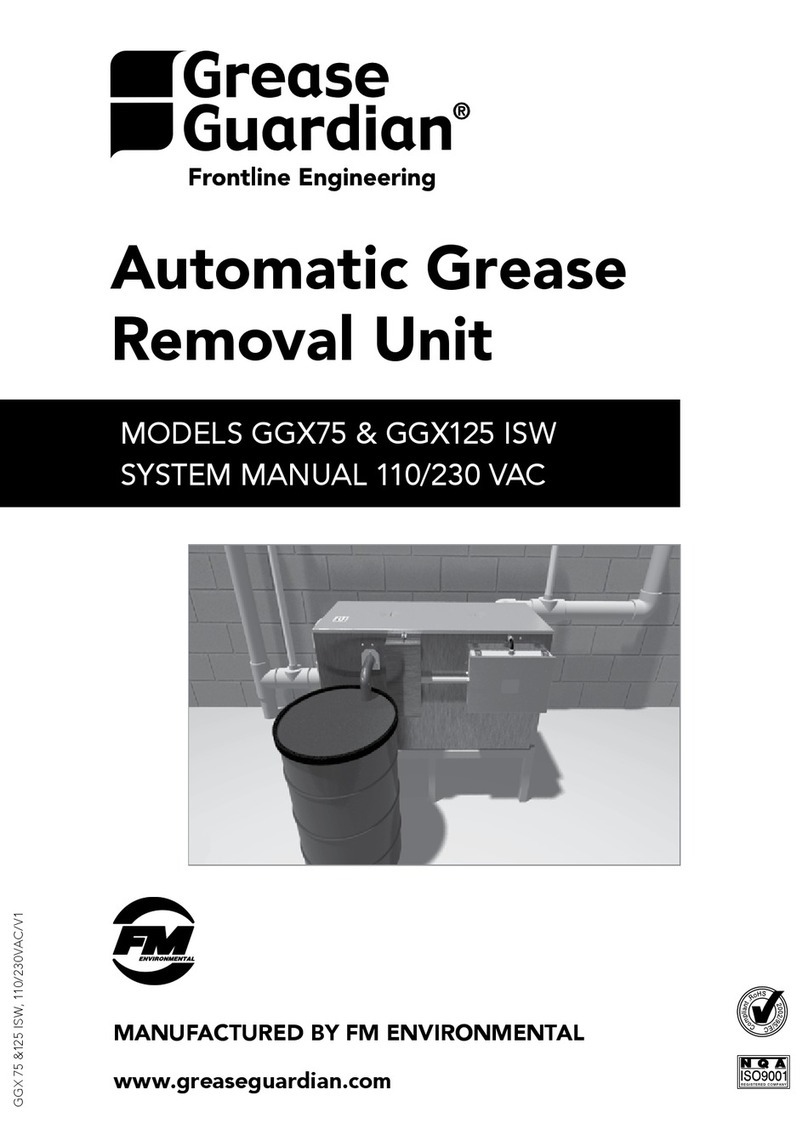
Grease Guardian
Grease Guardian GGX75 System manual
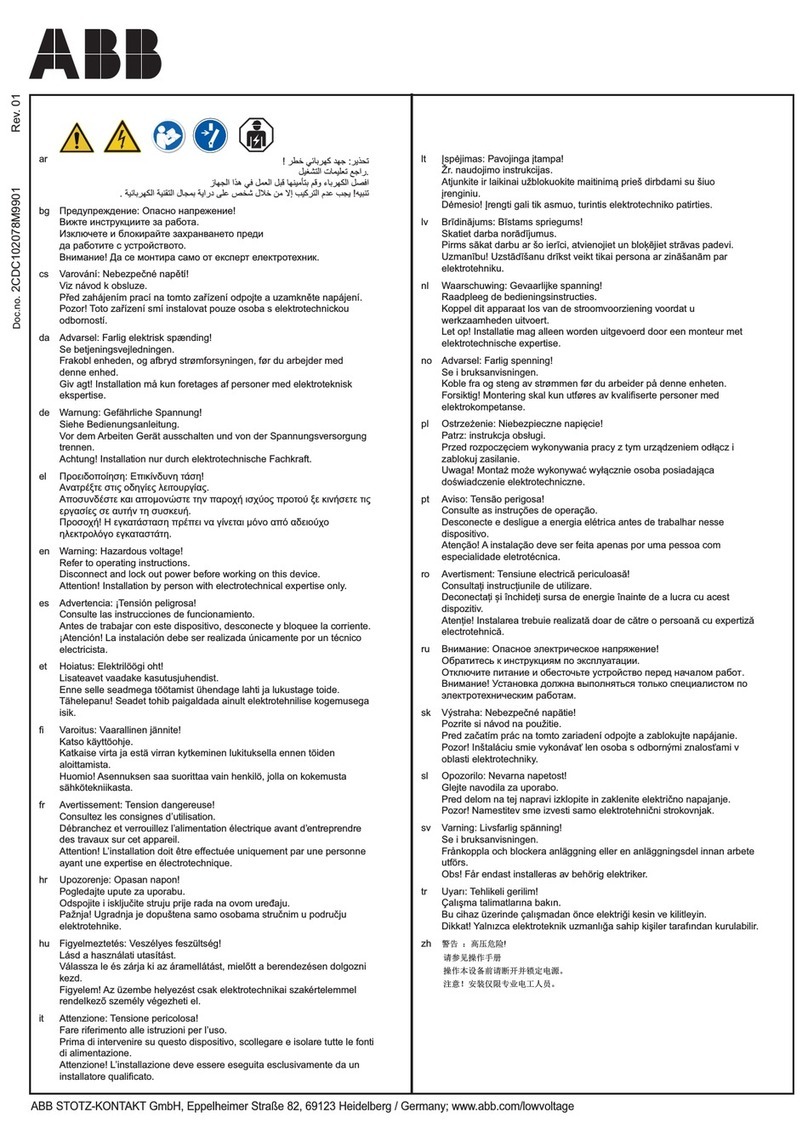
ABB
ABB MP0 Series installation instructions
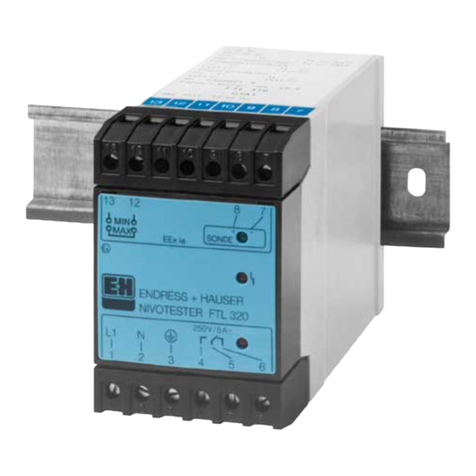
Endress+Hauser
Endress+Hauser Liquiphant M/S FTL5 Series operating instructions
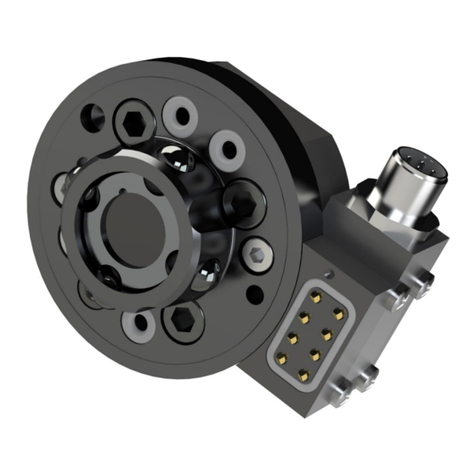
RSP
RSP TC20 product manual
